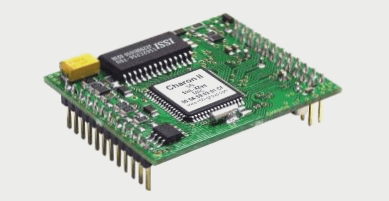The quality of demolding directly affects the printing effect. Generally, automatic visual printers have two demolding methods: “first scraper and then demolding”, which are more commonly used, mainly for simpler circuit boards; and “First demold and then scraper”, used for thinner circuit boards, etc.
SMT automatic solder paste printing machine is a fundamental requirement for high speed and stability from the perspective of use. The Mark point recognition of the printing machine is the primary factor. If the Mark point recognition difference often occurs, the Mark point recognition is not possible and manual intervention affects production. The corresponding operator needs to be added, increasing the cost of use.
Solder paste has different performance requirements in different stages of the electronic assembly process: the solder paste should have a long storage life before use, no chemical change within a certain period of time, no separation of solder and flux, no viscosity change, and requires low moisture absorption, low toxicity, and non-corrosiveness. Good printing performance during printing includes smooth filling of the template without overflow, smooth demolding, and no clogging of the template opening or dispensing nozzle. The molding should be good with no significant shape defects and no collapse after being placed for a period of time. It should have a long working life and can be kept at room temperature for a certain period without deterioration after printing.
Reflow soldering should have good wetting properties, and the solder should spread well on the base material; no spattering phenomenon, minimize the solder balls generated during the soldering process; after soldering, it should have good soldering strength to ensure assembly reliability. The residue after welding should have good stability, insulation, no corrosion, and be easy to clean. The activation temperature of the solder paste during the soldering process must cover the entire brazing temperature, generally from 80°C to 180°C {lead-free} or 150°C {leaded}. After cooling, the entire change process The weight loss rate after welding with medium flux can reach 94.48%.
Considering the printing process, different product assembly densities, and coating processes, choose solder pastes with different alloy particle sizes and viscosities. The particle size and viscosity of the solder paste have a great relationship with printability. To make the solder paste demolding smoothly, the size of the solder particles should follow the “three-ball law”, preferably the “five-ball law”.
For the assembly of more small components, solder paste with a small particle size should be used. Currently, 3 or 4 powders are generally selected, and finer powders such as No. 5 powders can be selected for spacing components, but the cost is higher. The physical properties of lead-free solder paste generally include alloy particle size and shape, flux content, viscosity, printability, and corrosivity.
SMT automatic solder paste printing machine is a fundamental requirement for high speed and stability from the perspective of use. The Mark point recognition of the printing machine is the primary factor. If the Mark point recognition difference often occurs, the Mark point recognition is not possible and manual intervention affects production. The corresponding operator needs to be added, increasing the cost of use.
Solder paste has different performance requirements in different stages of the electronic assembly process: the solder paste should have a long storage life before use, no chemical change within a certain period of time, no separation of solder and flux, no viscosity change, and requires low moisture absorption, low toxicity, and non-corrosiveness. Good printing performance during printing includes smooth filling of the template without overflow, smooth demolding, and no clogging of the template opening or dispensing nozzle. The molding should be good with no significant shape defects and no collapse after being placed for a period of time. It should have a long working life and can be kept at room temperature for a certain period without deterioration after printing.
Reflow soldering should have good wetting properties, and the solder should spread well on the base material; no spattering phenomenon, minimize the solder balls generated during the soldering process; after soldering, it should have good soldering strength to ensure assembly reliability. The residue after welding should have good stability, insulation, no corrosion, and be easy to clean. The activation temperature of the solder paste during the soldering process must cover the entire brazing temperature, generally from 80°C to 180°C {lead-free} or 150°C {leaded}. After cooling, the entire change process The weight loss rate after welding with medium flux can reach 94.48%.
Considering the printing process, different product assembly densities, and coating processes, choose solder pastes with different alloy particle sizes and viscosities. The particle size and viscosity of the solder paste have a great relationship with printability. To make the solder paste demolding smoothly, the size of the solder particles should follow the “three-ball law”, preferably the “five-ball law”.
For the assembly of more small components, solder paste with a small particle size should be used. Currently, 3 or 4 powders are generally selected, and finer powders such as No. 5 powders can be selected for spacing components, but the cost is higher. The physical properties of lead-free solder paste generally include alloy particle size and shape, flux content, viscosity, printability, and corrosivity.



